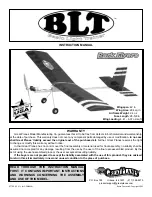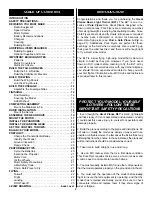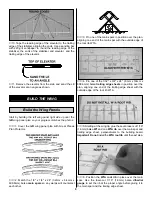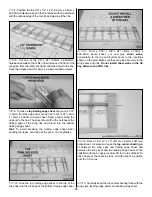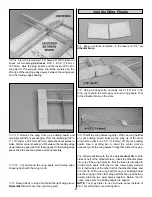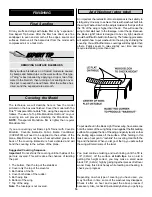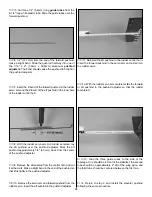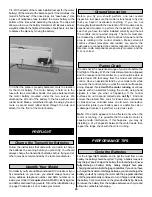
❏
Single-edge razor blades (HCAR0212)
❏
Small T-pins (HCAR5100)
❏
Builder’s triangle (HCAR0480)
❏
Small Phillips and flat blade screwdrivers
❏
Pliers with wire cutter (HCAR0630)
❏
Great Planes Plan protector (GPMR6167) or wax paper
❏
Sanding tools and sandpaper assortment
❏
Sealing Iron (TOPR2100)
❏
Double-sided foam tape (GPMQ4440)
Here is a list of optional tools mentioned in the manual that
will help you build the BLT.
❏
Great Planes CG Machine
™
(GPMR2400)
❏
Top Flite Precision Magnetic Prop Balancer
™
(TOPQ5700)
❏
Top Flite Hot Sock
™
iron cover (TOPR2175)
❏
Straightedge with scale (HCAR0475)
❏
Cutting mat (HCAR0456)
❏
Masking Tape (TOPR8018)
❏
CA Debonder (GPMR6039)
❏
CA Applicator tips (GPMR6033)
❏
Great Planes 5-1/2” [140mm] Bar Sander (GPMR6169)
and 150-grit adhesive back sandpaper (GPMR6183)
❏
Top Flite 320-grit sandpaper (TOPR8030) and 400-grit
sandpaper (TOPR8032)
For the best performance, the BLT must be built light. One
of the best ways to insure light weight is to build neatly and
make good-fitting glue joints that require less glue. Here are
some tips to help you build neatly and light.
1. The easiest way to cut balsa sticks is with a single-edge
razor blade. To do so, position the stick over the plan, then
place the razor blade on the stick where you wish to cut it.
Press down lightly on the razor blade to make a mark where
the stick is to be cut.
2. Take the stick off the plan and cut it over a cutting mat or
a scrap piece of wood (
Okay, if you’re careful you could go
ahead and cut the stick right over the plan, but if you do, you
may cut through the plan protector allowing the CA to soak
through and glue the structure to the plan
).
3. Because of the small balsa sticks used in the tail, only where
necessary
, we recommend using small T-pins (HCAR5100) or
small straight pins found in craft stores. Do not stick pins into
the sticks near the ends, or the wood may split.
4. If you have difficulty with the T-pins splitting the small
sticks, an alternate method is to use the “crossed-pin”
technique. Insert the T-pins into the building board in a
criss-cross fashion to hold the sticks to the plan.
5. Only a small amount of CA should be used to glue the parts
together. Use the included CA applicator tips to control and
pinpoint the amount of CA that comes from the bottle. When
the tip becomes clogged, cut a short length of the tip off and
continue. In addition to unnecessary weight, excess CA is
difficult to sand. If you require additional CA tips, order no.
GPMR6033 (5).
6. When applying CA, be careful to not glue your fingers to the
structure. In the process of
unsticking
your fingers you can
inadvertently damage the structure, thus requiring repairs and
adding additional weight
(not to mention the aggravation!)
.
7. Sanding requires a light touch to avoid damage. We
found the best method for sanding is to use light strokes in
the direction of the longest sticks. Be certain the sandpaper
is
thoroughly
bonded to the bar sander. Lifted edges will
catch the structure, causing damage. Use medium-grit
sandpaper such as 150 or 220.
8. One of the best ways to insure a lightweight model is to
proceed slowly and
build neatly
. Good glue joints with minimal
adhesive are stronger, lighter and have a better appearance
than poor-fitting joints with too much CA. Of course, you should
take this approach with
all
of your projects!
9. Work over a flat surface. Cover the plans with Great
Planes Plan Protector (GPMR6167) or wax paper so the
parts will not adhere to the plan.
IMPORTANT BUILDING NOTES
Optional Supplies and Tools
5
Summary of Contents for BLT
Page 24: ...TWO VIEW...

